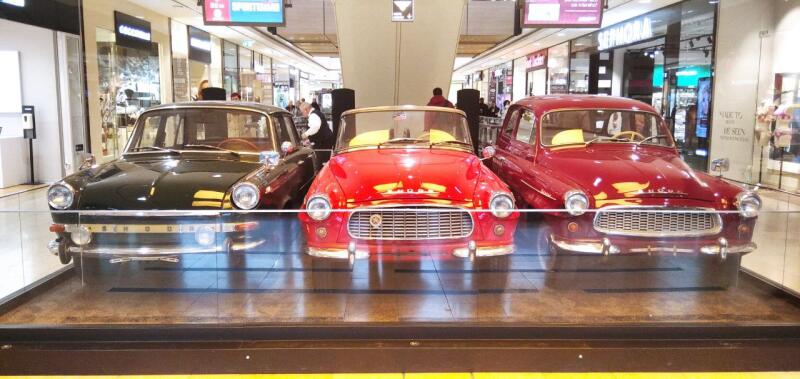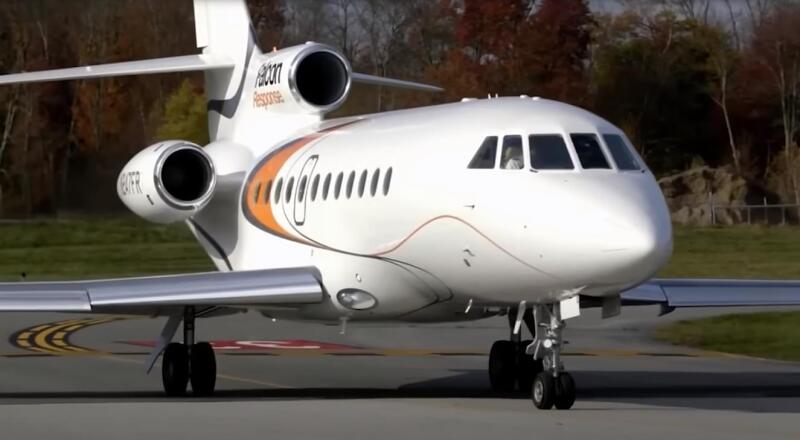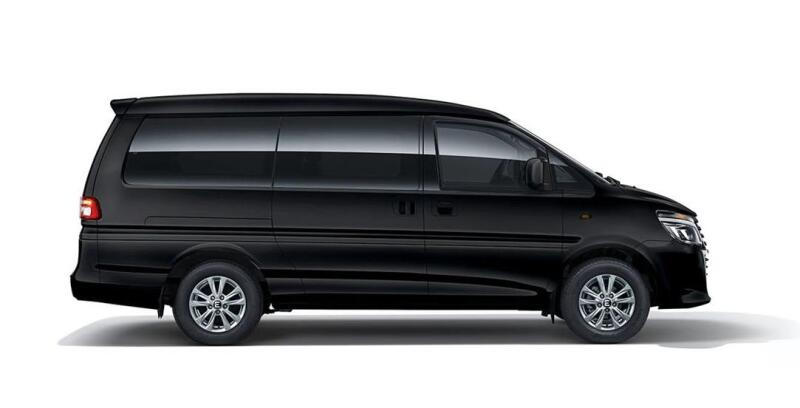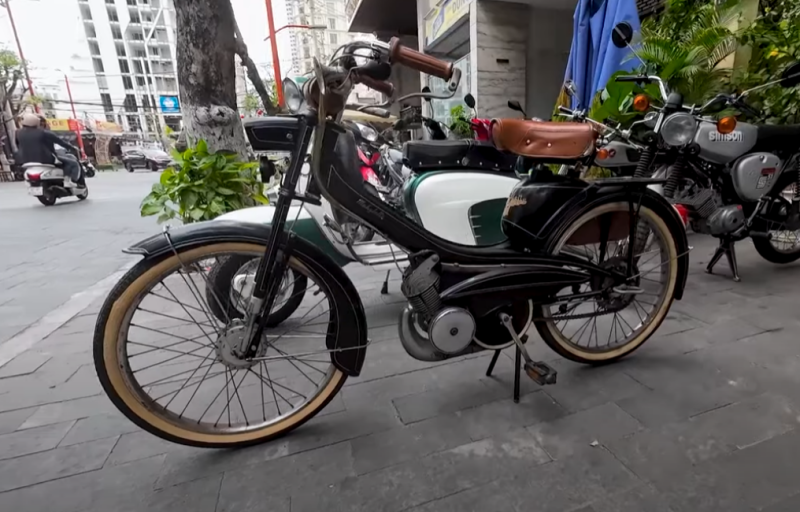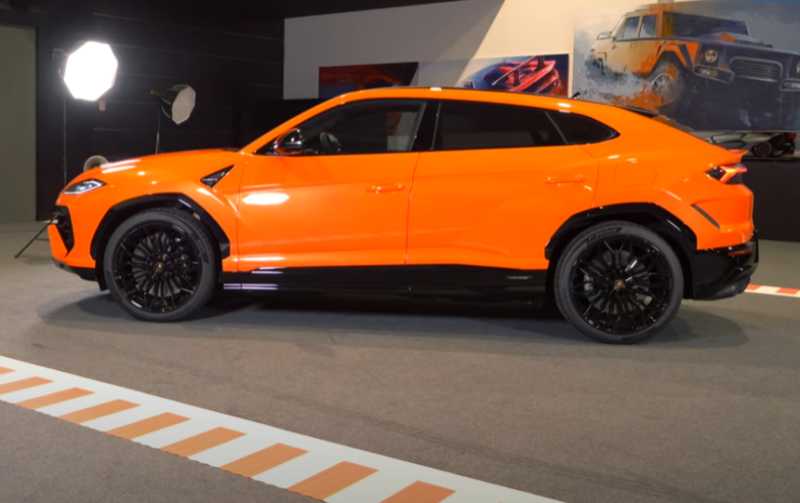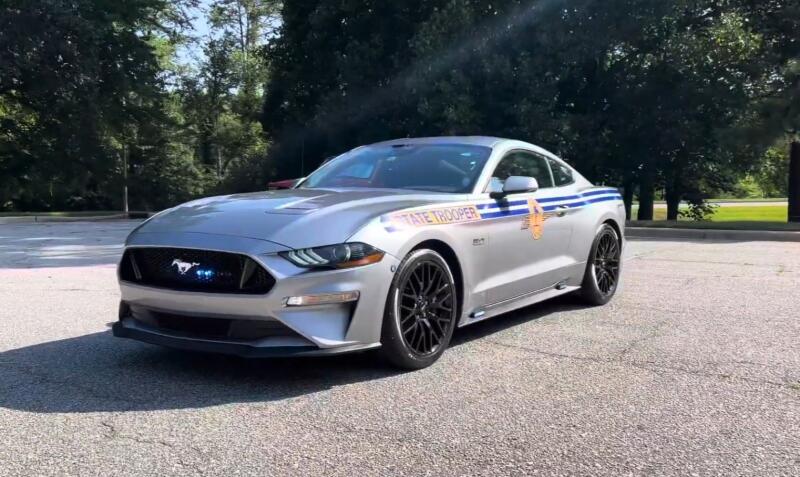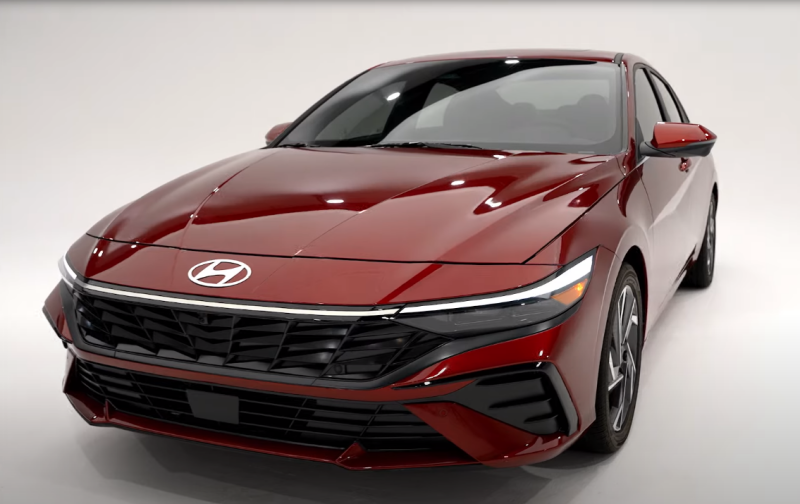I’ll note right away that there is no particular excitement here, and there are several reasons for this at once: Czech phlegm, round-the-clock availability of the exhibition for three weeks in March, and not a very large number of loyal fans. I think you yourself understand that there are very few people like Pan Milan Dochekal, who has preserved and provided most of the exposition, even in our vast country. What can we say about the 10-millionth Czech Republic then?
 Some just watch, others take pictures. Photo: youtube.com
Some just watch, others take pictures. Photo: youtube.comDespite this, local residents and guests do not leave Czech Skoda's automotive history objects completely unattended. People come up, admire the copies of cars, which breathe history, take pictures of them. Some also take pictures for the family album, so that memories of such an interesting event remain. Nevertheless, the majority of onlookers are young people and children. Moreover, the latter mainly belong either to the gypsy or to the Magyar diaspora. You understand, the guys are completely without complexes, and cars attract the male sex, regardless of nationality.
In one of the improvised pavilions, three models of the Skoda auto concern, very popular in the 60s of the last century, were located at once. The names themselves will seem familiar to us, but it is unlikely that any of us have seen such cars live before. It is about them that we will tell in today's article.
Promising development of the late 50s
The Czechoslovak transport sector was on the rise after the war. The first breakthrough was the legendary JAWA Perak. Added credibility to the local auto industry and the fact of the successful participation of models from both local plants in recent hostilities on both sides of the conflict. I think you understand that the war, unfortunately, creates the most extreme conditions for a full test of the car for durability. The Czech Tatras remained the last brand of truck used by the Wehrmacht on the eve of the defeat. Now, it seemed, is the time to tighten up the production of passenger vehicles.
 Felicia in the back of a convertible. Photo: youtube.com
Felicia in the back of a convertible. Photo: youtube.comIn September 1956, at an engineering exhibition in Brno, visitors were delighted with the prototype of the sports Skoda 440 Export, built on the basis of the Tudor Spartak. A year later, the improved Skoda 450 roadster with a 2 + 2 body shone in the same place. The four-speed transmission had a gear lever on the steering wheel. But the main success was waiting for the company two years later in Switzerland.
In March 1959, a modernized Skoda Felicia (450) was presented at the Geneva Salon, developed on the basis of the Octavia and Octavia Super sedans, which did not stand on the factory assembly line for long. Aside from the cosmetic changes (new headlights, split bumper), the most significant upgrade was the front axle with telescopic shock absorbers housed inside a spring with a transverse stabilizer.
After that, the car was presented at a similar event in Leipzig, where it was also expected to be a success. Serial production began, which lasted for seven years at the turn of two decades. It had the following characteristics:
✅ engine capacity - 1089 cu. cm
✅ power - 50 liters. With
✅ weight - 930 kg
✅ maximum speed - 135 km / h
For a short time of release, the car has undergone some changes. In the summer of 1959, they produced the first 25 cars with a removable laminate hardtop. By 1961, the shift lever was moved to the floor, a new grille and beautiful fenders appeared. In 1961-1964, the hardtop's laminated shell was expanded.
At the beginning of 1962, the Felicia Super was prepared with a more powerful 1221 cm³ (53 hp) SAE engine. A year later, the Felicia Super underwent its final facelift. Her story was coming to an end, because station wagons began to gain particular popularity. There were many who wanted to buy Felicia, but in 1964 its release was discontinued.
 The additional trunk fits perfectly into the overall design. Photo: youtube.com
The additional trunk fits perfectly into the overall design. Photo: youtube.comIn total, 1010 Felicia 450s were assembled in Kvasiny in 1957-1964 and 14 other modifications (Felicia (863-1959), Felicia Supers (1962-1962). It is safe to say that the Felicia roadster is considered one of the most beautiful Czechoslovak and European cars in the early 1964s.
Octavia - the eighth model of the Skoda brand after the war
At a time when the Western European market was increasing its momentum, the Czechs began to lag behind. Therefore, an urgent update of the model range was required. Octavia was a modernization of the post-war Skoda 440/445 and today is the eighth car of the brand with an independent rear suspension.
Octavia was produced in 1958-1971. She had updated: instrument panel, grille, and taillights. Also missing were the anachronistic rear fenders popular in the 50s.
More powerful Octavia TS successfully participated in many automobile competitions. He has three wins in his class at the demanding Monte Carlo Rally (RMC) in 1961, 1962 and 1963. There were other achievements in various competitions of those years, confirming the excellent reputation of the model.
 The sloping rear has become a hallmark of the Octavia. Photo: youtube.com
The sloping rear has become a hallmark of the Octavia. Photo: youtube.comThe car was assembled with a 4-cylinder engine with a working volume of 1221 cubic meters. see He gave out a power of 45 liters. With. (naturally, in the sports versions, the motor was boosted). During 1960-1964, about 286 thousand units of such equipment were assembled. Some of them were exported.
Skoda 1000MB - the most massive model of the plant in the 60s
By the middle of the decade, Skoda had acquired a completely new modern production line. It appeared at the facilities of the main plant in Mlada Boleslav and was intended for the assembly of the 1000MB model.
The spring of 1964 was another confirmation of the engineering competence of the Skoda creative team. The elegant 4-door 1000MB with compact rear-wheel drive proved to be one of the most advanced liter-powered vehicles in the class.
The innovative model was based on a completely new philosophy: the modern four-cylinder engine was moved to the rear, where it drove the rear wheels. We also made many other groundbreaking changes, using lightweight cast aluminum products in:
✅ cylinder bodies
✅ crankshaft
✅ mechanical 4-speed gearbox
Thanks to a patent by the Czech engineer Josef Polak in 1922, these parts were produced in a much shorter time and with less energy consumption. On the new line, the load-bearing body of the novelty was assembled from 665 stamped parts with 6900 welding points.
 1000 MV received an original design. Photo: youtube.com
1000 MV received an original design. Photo: youtube.comThe development of the sedan model was carried out under the name of the project NOV (Novy Osobni Vuz), which translates as “new passenger car”. In the early 1960s, it was subjected to practical tests in extreme climatic conditions, which 1000MB passed perfectly. The technical characteristics of the car are:
✅ working volume - 1000 cubic meters. cm
✅ power - 37 (since 1966 - 43) l. With.
✅ weight - 755 kg
✅ maximum speed - 120 km / h
In 1966, a more powerful modification was added (1100 cc and 52 hp). A little later, a two-door version of the MBX appeared, adding a touch of extravagance. Today, it is highly sought after by classic car collectors.
Despite its compact dimensions (4,17 m long, 1,62 m wide and 1,39 m high), the 1000 MB has a very spacious and practical interior. The factory seats had a folding function, making them a suitable replacement for a bed when traveling. In addition, there were two trunks at once! A small compartment behind the rear seats could be accessed even while traveling, and the front offered a volume of up to 220 liters.
 The company badge is placed very stylishly. Photo: youtube.com
The company badge is placed very stylishly. Photo: youtube.comBetween 1964 and 1969, more than half of the 440 Skoda 639 MB and 1000 MB sedans were exported to dozens of markets. For example, in 1100, deliveries abroad amounted to 1965%. The potential of the rear engine concept is confirmed by the sporting success of both the 70 MB and later models such as the legendary 1000 RS. Therefore, the company returned to it over the next two decades, until the era of front-wheel drive cars came.
